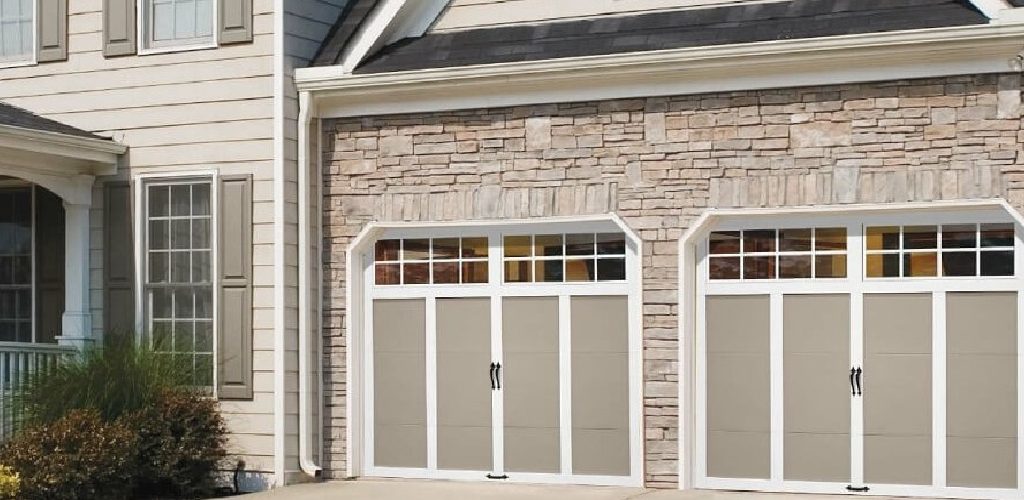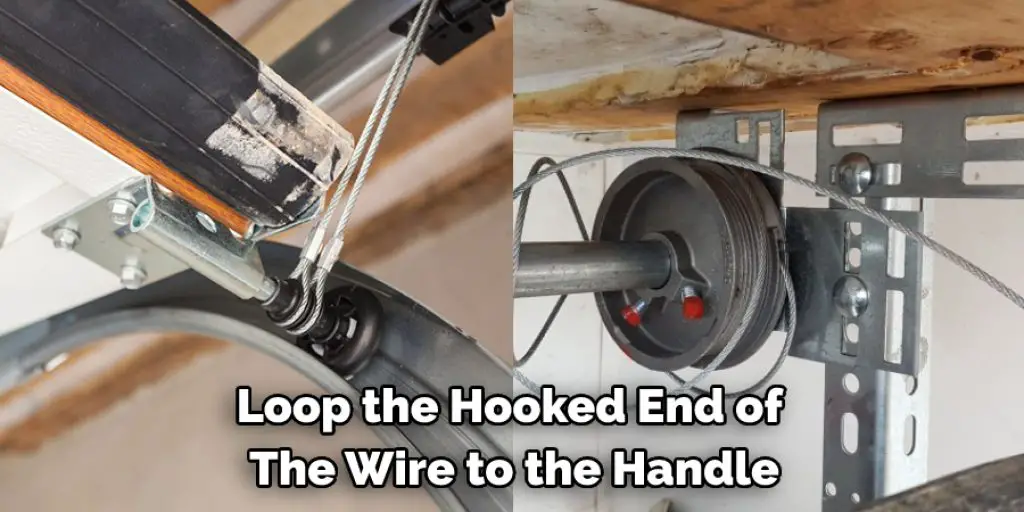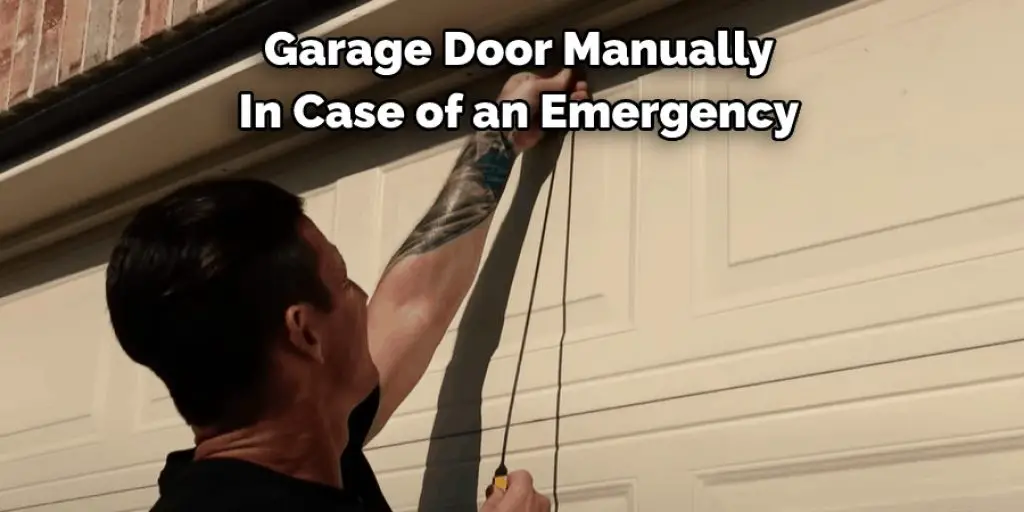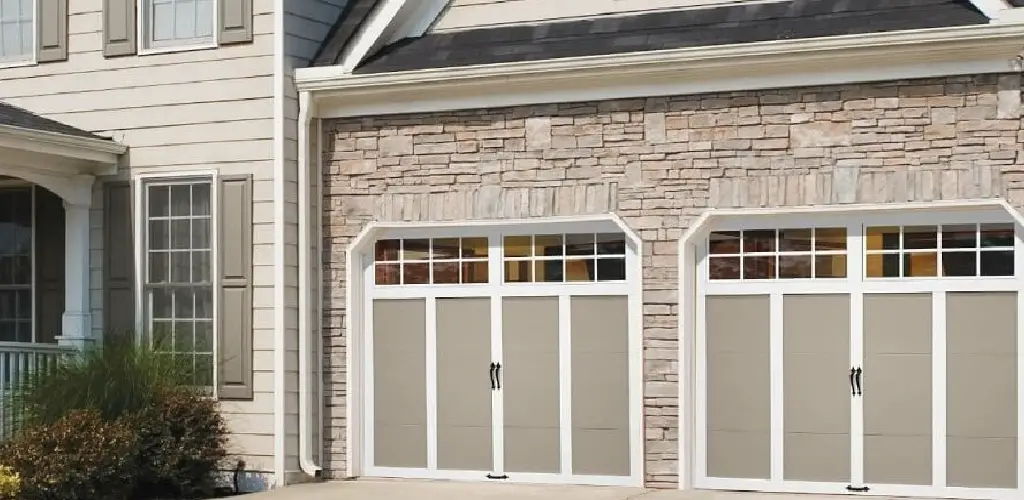If you’re like most people, you probably use your garage door opener daily. But what happens if you lose power or the opener breaks? You may be wondering how to manually open garage door from outside. Luckily, it’s not difficult to do! This blog post will show you step-by-step how to open your garage door manually. So next time something goes wrong, you’ll know exactly what to do!

Why Open Garage Door from Outside?
There are a few reasons you might need to open your garage door from the outside. Maybe you’ve lost power, and the opener isn’t working, or maybe the opener has broken and needs to be fixed. Whatever the reason, it’s good to know how to open your garage door manually in case of an emergency.
Required Materials
In order to manually open your garage door, you’ll need a few supplies. You’ll need:
A Ladder:
You’ll need a ladder to reach the emergency release handle on your garage door opener. Make sure the ladder is tall enough to safely reach the handle.
A Winding Bar:
A winding bar is used to turn the tension spring on your garage door, allowing you to manually raise or lower it. You can purchase one at any hardware store.
A Partner:
It’s always a good idea to have someone with you when manually opening your garage door. This person can help stabilize the ladder and provide assistance if needed.
How to Manually Open Garage Door from Outside Step by Step Guide
Step 1: Find the Emergency Release Kit
Almost all garage doors have an emergency release kit that will allow you to open the door from the outside in case of an emergency. The kit is usually a small red handle attached to the door or door frame. It’s important to know where this emergency release kit is located before you need it, so take a moment to familiarize yourself with its location. The emergency release kit is typically located near the top of the door, but it can vary depending on your specific garage door opener.
Step 2: Unlock the Release Cord
The release cord is located on the trolley and is used to open the garage door manually in a power outage or if the opener is not working. You will need to pull down on the red handle to unlock it. Once it is unlocked, you can pull it down and release the door.
If you have a garage door with an electric opener, you should have a release cord. This safety feature allows you to open the door manually in case of a power outage or if the opener is not working.
To unlock the release cord, pull down on the red handle. Once it is unlocked, you can pull it down and release the door.
If you do not have a release cord or your garage door does not have an electric opener, you will not be able to open the door manually from the outside. You will need to call a professional to help you in this case.
Step 3: Lift the Garage Door Manually
If your garage door has an extension spring system, you can manually lift the door by disconnecting it from the opener and pulling it up with your hands. If your garage door has torsion springs, you will need to call a professional to help you with this step.
Once the door is lifted, you can open it manually by pushing it open. If your garage door has a chain system, you can disconnect the chain from the opener and pull the door up with your hands.
Step 4: Use an Outside Key Release
Find it and insert the key if your garage door opener has an outside key release. If you don’t see a key release, look for a hole near the bottom of the garage door. This is where you’ll insert the end of a broom handle or another long object.
Once you’ve found the key release or the hole, insert the object and turn it to release the door. If you’re having trouble finding the key release, check your garage door opener manual for more information.

With the door released, you should be able to open it by hand. However, if it’s still difficult to open, there may be an issue with your springs or tracks. In this case, you’ll need to call a professional for repairs.
Step 5: Deactivated the External Entrapment Protection Device
If your garage door opener has an external entrapment protection device, make sure it is not activated. To do this, find the release handle on the device (it will be red or black), and push it in the direction of the arrow. If your opener does not have this device, proceed to Step 6.
If you find that your entrapment protection device is activated and you cannot deactivate it, do not attempt to open the garage door.
Step 6: Manually Open the Garage Door
Once you have deactivated the external entrapment protection device (if your opener has one), you should be able to open the garage door manually. To do this, find the release handle on the garage door opener (it will be red or black), and push it in the direction of the arrow.
If you cannot locate the release handle, or if the handle does not work, you can try to manually open the garage door by pushing up on the door itself. Be careful, as the door may be heavy, and there is a danger of being injured if it falls on you.
Step 7: Close the Garage Door
Once you have finished using the garage, close the door by reversing the process. First, activate the external entrapment protection device (if your opener has one), and then use the release handle or push up on the door to close it. Make sure to secure the door by pulling down on the red handle.
If you have a garage door opener with a wireless keypad, you can close the door by entering your security code. This is an added layer of security that can help keep your home safe and secure.
That’s all there is to it! Follow these steps, and you’ll be able to manually open your garage door from the outside in no time. If you want to know more about how to manually open garage door from outside, keep reading.
Wire Methods to Open Garage Door from Outside
A few methods can be used to open a garage door from the outside when the power is out or when you don’t have your key. One easy way is to use wire. All you need is a coat hanger or some other thin wire and a little bit of patience.
Step 1: Prepare a Wire with One Hooked End
First, you’ll need to find a piece of wire with one hooked end. This can be something like a coat hanger or a sturdy piece of wire on hand. If you’re using a coat hanger, make sure to straighten it out as much as possible before starting. The hooked end will be used to grab onto the emergency release lever.

Step 2: Loop the Hooked End of The Wire to The Handle
Now that you have removed the retaining pin take the hooked end of your wire and loop it around the handle. The location of your handle may vary depending on the model of your garage door, but it is typically located on either side of the door. Once you have looped the wire around the handle, pull tight and twist to form a secure connection.
Step 3: Hang The Wire on The Track
With the handle looped, take the other end of your wire and hang it on the track of your garage door. Make sure that the wire is hanging down far enough to reach it from outside of your garage. If necessary, use a step ladder to reach the track. Be careful not to put too much pressure on the wire as it could snap.
Step 4: Pull the Trolley Tag for The Emergency Release
There is also a small tag on the trolley that can be pulled to release the door in case of an emergency. This tag should be used if the power is out or if there is some other problem that prevents the door from opening automatically.
Locate the small tag on the trolley and pull it towards you to release the door. The door will open, allowing you to exit or enter the garage.
Be sure to release the tag after using the garage to prevent the door from closing accidentally. Keep reading for more information about how to manually open garage door from outside.

Some Other Ways to Open a Garage Door from Outside:
1. Door Must Be in Down Position
In order to open the door from the outside, the first thing you need to do is make sure that the door is in the down position. If it’s not, you won’t be able to open it. Once the door is in the down position, you can proceed with one of the following methods.
2. Pull the Emergency Release Cord
The emergency release cord is a red rope that hangs from the center of your garage door. On one end of the rope is a handle, and on the other is a T-shaped bracket that fits into a slot on the bottom panel of your door. To open your garage door manually, pull on the handle until the T-shaped bracket is pulled out of the slot.
3. Manually Move the Garage Door and Return to Down Position
If the garage door opener is working, but you still can’t open your garage door from the outside, there could be an issue with the sensors. These safety features are designed to prevent the garage door from closing if something is in the way.
To test this, disconnect the garage door opener by pulling on the red cord that hangs down from the opener. Now, try to open the door from the outside. If it opens, the sensors are likely the issue. Reconnect the garage door opener and adjust the sensors as needed.
4. Pull the Emergency Release Cord Toward the Door
The emergency release cord is usually red and is located next to where the garage door opener’s arm attaches to the trolley. There will be a handle you can grip to pull on the cord.
Once you’ve pulled it about four or five inches, you should see and feel the door disconnect from the opener. If your garage door model doesn’t have an emergency release cord, you can try to pry the door open with a crowbar or similar tool.
5. Reconnect the Trolley to the Opener Carriage
Locate the release cord hanging down from the trolley with the door fully open. Take hold of the release cord, and pull it down until the trolley is connected to the opener carriage. Ensure that the trolley is securely reconnected before letting go of the cord. If necessary, use a step ladder to reach the release cord.
If your garage door opener model does not have a release cord, you need to reconnect the trolley to the carriage using the emergency release handle. First, locate the handle, which is usually found near the bottom of the opener unit. Insert the handle into the slot on the carriage, and then pull back until the trolley is reconnected. Make sure that the trolley is securely reconnected before releasing the handle.
Can You Open a Garage Door Manually?
There may come a time when you need to open your garage door manually. For example, maybe the power is out, the opener is broken, or you need to get something in or out and don’t want to automatically wait for the door to open. No matter the reason, it’s good to know how to open a garage door manually in case of an emergency.
The process of manually opening a garage door is quite simple. All you need to do is lift the door and release it to swing open. If your garage has a manual opener, there will be a handle or crank on the inside of the garage that you can use to open and close the door.
Why Can’t I Open My Garage Door Manually?
There are a few reasons why you might not be able to open your garage door manually. One reason could be that the door is locked. If this is the case, you’ll need to use your garage door opener to unlock it.
Another reason your garage door might not open manually because the door spring has broken.
If you’ve tried both of these solutions and still can’t open your garage door manually, there might be something wrong with the door itself. In this case, it’s best to call a professional for help. Attempting to fix a broken garage door without the proper knowledge and experience can be dangerous.
Frequently Asked Question
Are Garage Doors Easy to Break Into?
There are a lot of factors to consider when it comes to the security of your garage. First, you want to ensure that you take all the necessary precautions to keep your belongings safe. One question that many people have is how easy it is to break into a garage. Generally, garage doors are not very easy to break into.
Can You Manually Open a Garage Door with A Broken Spring?
While opening a garage door with a broken spring is possible, it is not recommended as it can be very dangerous. Instead, it is best to call a professional to fix the garage door spring. Attempting to manually open a garage door with a broken spring can lead to serious injuries. You should always prioritize safety and leave any repairs to trained professionals.
How Do I Know if My Garage Door Has a Manual Release?
If your garage door was installed in the last 10-15 years, it most likely has a manual release. However, if you’re unsure, refer to your garage door opener’s user manual or contact the manufacturer for more information. The manual release is typically a red cord hanging from the center rail of your garage door opener.
How Often Should I Test the Manual Release of My Garage Door?
It is recommended to test your garage door’s manual release at least once a year. This will ensure that it is functioning properly in case of an emergency. Additionally, you should also test your garage door sensors and safety features regularly to ensure they are working correctly. If you notice any issues, it is best to have a professional inspect and repair them. By regularly maintaining your garage door, you can ensure its longevity and safe operation.
Conclusion
If you’re ever locked out of your house, don’t worry – there’s a way to open your garage door from the outside! All you need is a coat hanger and some patience. Follow these simple instructions, and you’ll be back in your home in no time. Thanks for reading our post about how to manually open garage door from outside. We hope it was helpful and informative! Remember to always prioritize safety when dealing with garage door issues, and don’t hesitate to call a professional if you’re unsure or uncomfortable with any steps.
You Can Check It Out To Open Broken Garage Door
You Can Check It Out to Reset Clicker Garage Door Keypad
You can check it out to Bypass a Garage Door Sensor

